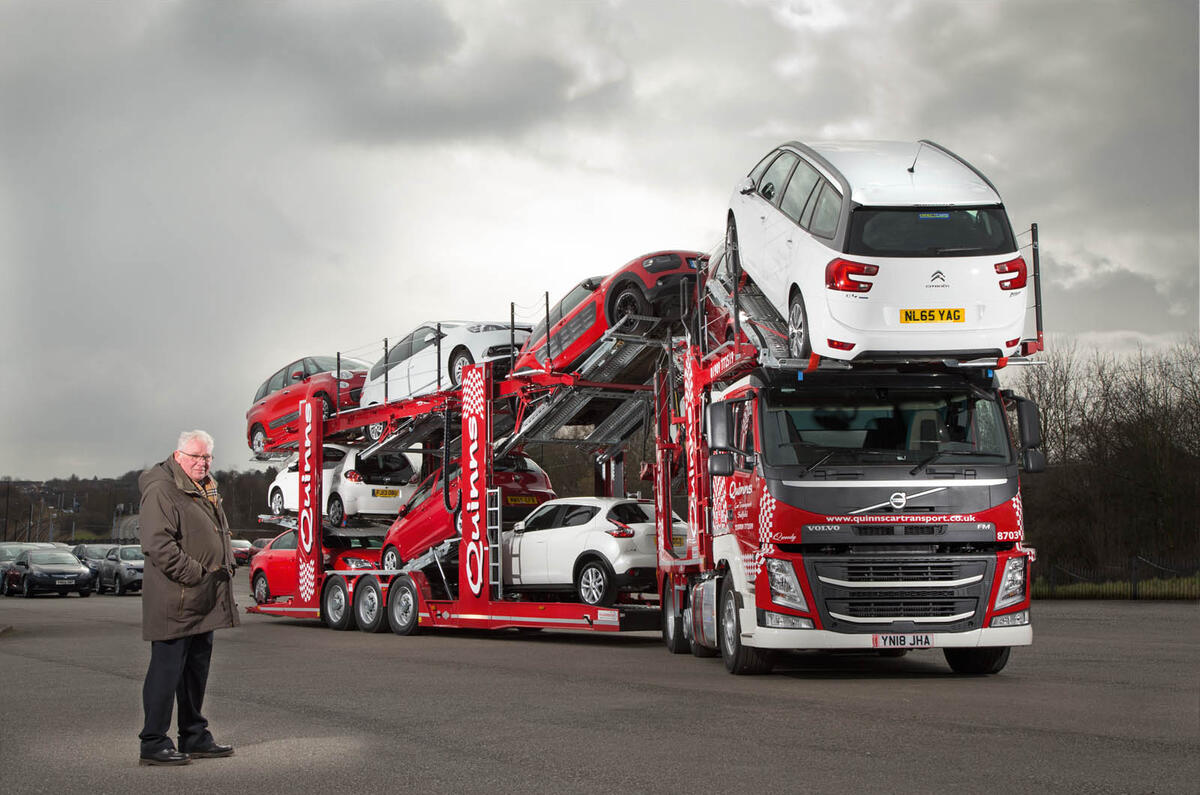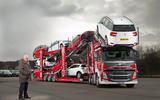You’re in a windswept, dockside vehicle compound. There’s a gale blowing and it’s pouring with rain. You’re 10 feet from the ground, squeezing out of a brand-new Mercedes onto a narrow walkway. One wrong move and you’ll fall. People do.
Welcome to Mick Crump’s world. He’s a car transporter driver and says loading at a windswept docks is a nightmare. “You can be blown straight over the side,” he says. “But it’s not just docks. You get some drivers who arrive at a delivery only to find they’re missing a car because it fell off, or drivers who put something heavy like a Range Rover on the back and the whole rig starts swinging like a demolition ball.”
Last November, a transporter carrying 12 cars overturned on a roundabout in Skipton; in September, a car fell off a transporter on the M6; on the M60, in 2016, a transporter shed its load of supercars.

Clearly, the life of a transporter driver is not for the inexperienced – which is why my suggestion that I load Mick’s brand-new £250,000 12-car transporter is kicked into the long grass.
“Health and safety,” chorus the three sisters who own it, one of 50 transporters operated by the family firm, Quinns Car Transport, that Mick drives for. In other words: ‘You’ll mangle the cars, damage our new truck and break your neck.’
After tottering up the 18.75-metre rising deck of the transporter, an Odyssey built by Transporter Engineering and pulled by a Volvo FM450, I admit they have a point.





























Join the debate
Add your comment
I worked for a car dealership
I worked for a car dealership many years ago. The transporter driver ignored instructions and drove under a low bridge, decapitating the brand new customer car on top. Needless to say, my boss was furious.
More usually, I remember having to check each car as it came off the transporter for damage. Once we had signed for the cars, any problems were the dealer’s reponsibility.
I used to work at Measham
I used to work at Measham auctions, decades ago, and watched some clowns loading a Mini onto a flatbed using some sturdy wooden joists. It was damp and the car kept losing traction so they decided to take a run at it. Awesome. The car hit the ramp and kept going almost horizontally until the joists decided they'd had enough and sprung back into shape, catapulting the Mini up into the air. It landed neatly on its side with the timbers placed neatly alongside it. Happy days.
RIP British lorries ...
... at least the transporter section is UK made.